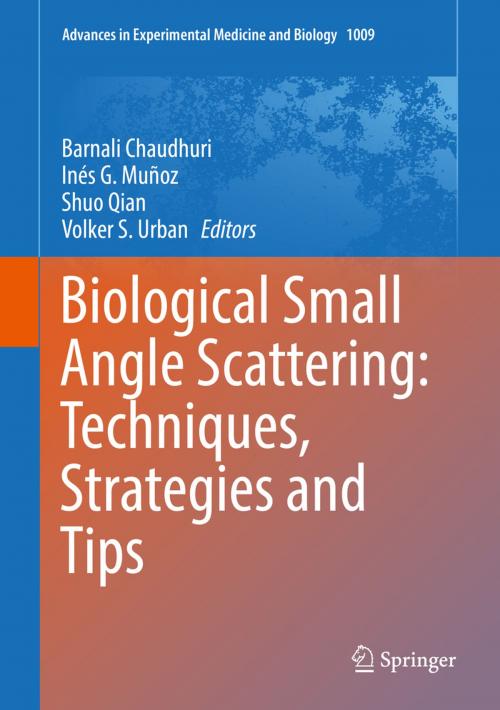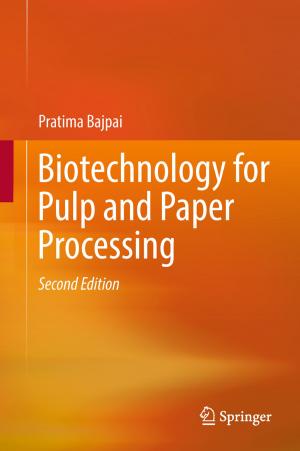Biological Small Angle Scattering: Techniques, Strategies and Tips
Nonfiction, Science & Nature, Science, Other Sciences, Molecular Biology, Biological Sciences, Biochemistry| Author: | ISBN: | 9789811060380 | |
| Publisher: | Springer Singapore | Publication: | December 7, 2017 |
| Imprint: | Springer | Language: | English |
| Author: | |
| ISBN: | 9789811060380 |
| Publisher: | Springer Singapore |
| Publication: | December 7, 2017 |
| Imprint: | Springer |
| Language: | English |
This book provides a clear, comprehensible and up-to-date description of how Small Angle Scattering (SAS) can help structural biology researchers. SAS is an efficient technique that offers structural information on how biological macromolecules behave in solution. SAS provides distinct and complementary data for integrative structural biology approaches in combination with other widely used probes, such as X-ray crystallography, Nuclear magnetic resonance, Mass spectrometry and Cryo-electron Microscopy. The development of brilliant synchrotron small-angle X-ray scattering (SAXS) beam lines has increased the number of researchers interested in solution scattering. SAS is especially useful for studying conformational changes in proteins, highly flexible proteins, and intrinsically disordered proteins. Small-angle neutron scattering (SANS) with neutron contrast variation is ideally suited for studying multi-component assemblies as well as membrane proteins that are stabilized in surfactant micelles or vesicles. SAS is also used for studying dynamic processes of protein fibrillation in amyloid diseases, and pharmaceutical drug delivery. The combination with size-exclusion chromatography further increases the range of SAS applications.
The book is written by leading experts in solution SAS methodologies. The principles and theoretical background of various SAS techniques are included, along with practical aspects that range from sample preparation to data presentation for publication. Topics covered include techniques for improving data quality and analysis, as well as different scientific applications of SAS. With abundant illustrations and practical tips, we hope the clear explanations of the principles and the reviews on the latest progresses will serve as a guide through all aspects of biological solution SAS.
The scope of this book is particularly relevant for structural biology researchers who are new to SAS. Advanced users of the technique will find it helpful for exploring the diversity of solution SAS methods and applications.
Chapter 3 of this book is available open access under a CC BY 4.0 license at link.springer.com.
This book provides a clear, comprehensible and up-to-date description of how Small Angle Scattering (SAS) can help structural biology researchers. SAS is an efficient technique that offers structural information on how biological macromolecules behave in solution. SAS provides distinct and complementary data for integrative structural biology approaches in combination with other widely used probes, such as X-ray crystallography, Nuclear magnetic resonance, Mass spectrometry and Cryo-electron Microscopy. The development of brilliant synchrotron small-angle X-ray scattering (SAXS) beam lines has increased the number of researchers interested in solution scattering. SAS is especially useful for studying conformational changes in proteins, highly flexible proteins, and intrinsically disordered proteins. Small-angle neutron scattering (SANS) with neutron contrast variation is ideally suited for studying multi-component assemblies as well as membrane proteins that are stabilized in surfactant micelles or vesicles. SAS is also used for studying dynamic processes of protein fibrillation in amyloid diseases, and pharmaceutical drug delivery. The combination with size-exclusion chromatography further increases the range of SAS applications.
The book is written by leading experts in solution SAS methodologies. The principles and theoretical background of various SAS techniques are included, along with practical aspects that range from sample preparation to data presentation for publication. Topics covered include techniques for improving data quality and analysis, as well as different scientific applications of SAS. With abundant illustrations and practical tips, we hope the clear explanations of the principles and the reviews on the latest progresses will serve as a guide through all aspects of biological solution SAS.
The scope of this book is particularly relevant for structural biology researchers who are new to SAS. Advanced users of the technique will find it helpful for exploring the diversity of solution SAS methods and applications.
Chapter 3 of this book is available open access under a CC BY 4.0 license at link.springer.com.















